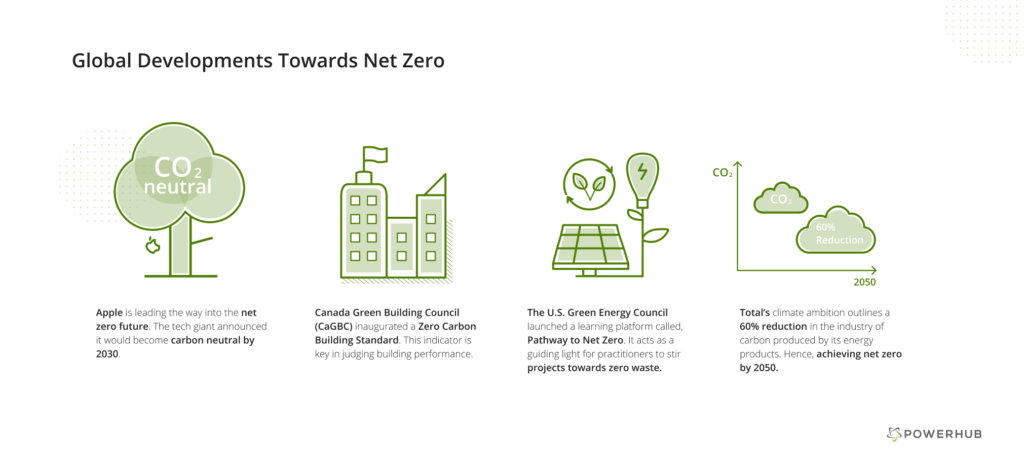Storms and catastrophes usually leave a lot to think about in their wake. It’s a funny feeling though. Kinda like having butterflies in your stomach. Why? Well, because we’ve known it all along that it shouldn’t take a global dilemma for humanity to understand the damage it’s been inflicting on the planet. That’s what makes a compelling case for net zero with renewable energy.
#NetZero has been trending on twitter for quite some time now. Being interested in all things renewable, we decided to explore this catch phrase, and well yes, pick it apart!
What Really Is Net Zero?
A simple concept of balancing the amount of carbon produced, with the amount eliminated from the environment. Thus, resulting in a net difference of zero. While it does sound easier on paper, net-zero is no longer optional if we want to fulfill the Paris Climate Agreement.
According to the Energy & Climate Intelligence Unit, the 1.5-degree global warming target in the said agreement can only be met if the world reaches net zero by the middle of this century. Hence, governments with strong financial backing have already started working towards their individual net-zero with renewable energy goals.
Till September 2019, 77 countries and 100+ cities around the world had committed to neutralizing carbon emissions. Therefore, beginning their contributions towards a cleaner planet.
Seeing into a Net Zero Future
The year 2019 saw a significant shift towards renewables – primarily because it was a year of rampant climate emergencies. Cities, states, and governments mobilized their renewable energy assets after declaring climate emergencies. Taking the number from 233 announcements in January 2019 to 1288 in December 2019.
And as the hottest decade came to an end, net-zero with renewable energy surfaced as a top mandate in every economic and political agenda. So, what do we see into a future fueled by net-zero motifs?
For one, a number of top renewable energy trends have revealed a shift towards hybrid solar and wind farms. Such clean energy models not only produce more power, they also help battle the intermittent nature of natural resources.
Moreover, electrification of transport is another means to a #NetZero end. In the United Kingdom, for instance, transportation was the second largest contributor to total carbon emissions in an average household in 2017. No doubt, the 2376 kgs of CO2 emitted from every single household would be a deterrent to the nation’s 2050 net-zero goals.
The production of green hydrogen with renewable electricity has been a definite step towards reducing carbon emissions from the transportation sector.
Therefore, the crux of a net-zero future lies in innovation and investment. Accepting change and making environments conducive to technological advancements opens doors to clean energy in historically industrious markets.
Global Developments Towards Net Zero
Fortunately, there’s a lot happening on this front. Governments, local bodies, and socially conscious companies are now pledging net zero with renewable energy targets. Therefore, there’s great momentum, and plenty of effort is being put towards it.
Here are some noteworthy examples:

How Can You Help?
Depends on who you are. If you’re a renewable energy asset developer, you can help by building easy to manage plants, and assessing project feasibility from the climate change perspective. Looking at these factors along with the bankability of renewable energy assets brings focus to the bigger picture.
If you’re an asset manager, get managin’ with smart platforms that induce efficiency, and help produce clean power with minimum losses. And alas, if you’re an advocate of the #gogreen and #cleanenergy movements, you can play your part in bringing about net-zero by being socially conscious.
Reduce emissions by making smart (read: clean) choices. Whether it’s financially offsetting your first post COVID long-distance flight, or participating in a tree plantation drive; it’s a cause worth working toward.




